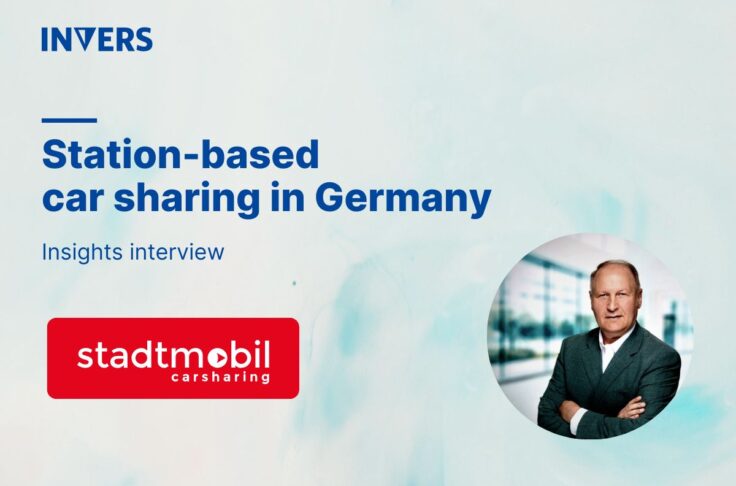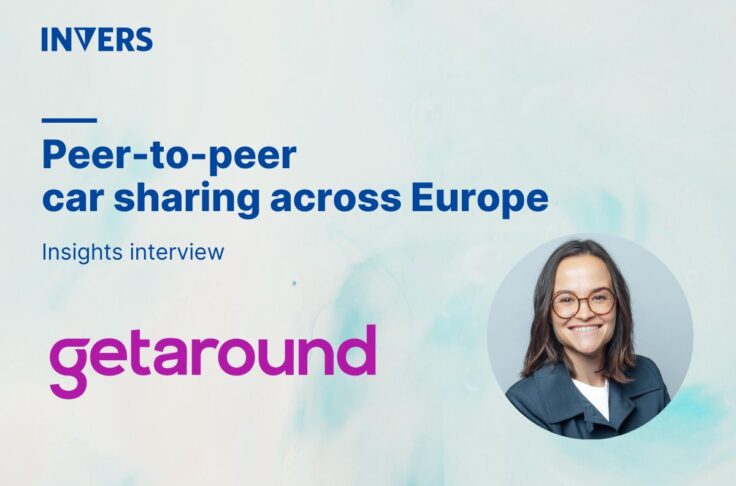Growing demand for shared mobility: Lessons from movmi
Summary
There is a demand for more shared mobility services worldwide, but the service needs to meet the needs of consumers and overcome operational challenges unique to each city. movmi is an experienced shared mobility boutique agency that shares some insights with us in this “lessons from” series.

Shared mobility is constantly evolving and understanding the ins and outs of what contributes to a successful shared mobility operation is critical. With more stakeholders getting involved in the shared mobility space, launching a shared mobility service in any city can be a challenge.
Fortunately, there are people you can rely on to get started in the right direction. movmi, an award winning WBE Canada certified (Women Only Business Certification) boutique agency, specializes in shared mobility architecture. From the design to planning, to launching new shared mobility services, movmi has been supporting shared mobility operators for over 7 years and has helped launch over 60 projects since.
In this “lessons from” edition, we interview Venkatesh Gopal, Partnerships and Business Development Manager at movmi, to learn more about what shared mobility operators should understand when launching their business. Having spent over a decade in the automotive industry, Venkatesh helps businesses, cities and corporations find answers to their transportation problems. He has worked across micromobility, carsharing, and multimodal MaaS projects. Leading a car-free lifestyle himself, Venkatesh strives to create better, people-focused mobility ecosystems across cities.
What are some of the biggest obstacles you see new mobility operators struggling to achieve or address?
There are many, but that’s what makes the shared mobility space so exciting.
Utilization isn’t a straight-line solution to profitability. The difference between financial projections on paper and success of operations on ground is that. Most operators are quizzed between achieving more utilization by making it increasingly convenient to users and supplying enough vehicles. It’s key to zero down on the business model works to understand each of their strategies and target market users. For instance, choosing between free floating and station-based early on is important to set expectations in the utilization vs availability matrix. In micromobility, rebalancing operations can make or break the feasibility of a business. It’s critical for operators to identify that ideal sweet spot and provide a consistently reliable experience compared to a continually changing one.
Technology helps decipher this to a large extent. Staying on top of what capable fleet management software helps measure, picking up one’s priorities and executing corrective actions determines success. Adding more vehicles helps, but at times innovative operational management such as incentive schemes, user rewards and loyalty and introducing new business models work better.
What is the critical success factor in an operator’s tech stack? Why?
Whether it is tailoring the user experience or tying into a MaaS system, technology plays a critical role. Reliability in operations rests on reliability of the tech stack. Ensuring the combination of hardware and software that allows operators to focus on delivering value to their end users can be difficult to achieve, but not impossible. For instance, in carsharing, responsiveness of the telematics (and therefore access to the car) can make or break the brand image and once soured, users may never return. For micromobility, hardware also means the vehicle itself as the telematics device may come embedded or factory-fitted. Here it’s about making the right choice so that the operator is able to tailor the city or business requirements that the service needs to fulfil.
Flexibility in the software side is critical as well. User experience needs to be as easy as possible, and operators need to have control of the experience. If the pandemic has made us realize one thing, it is that businesses who show the best agility to meet user demands thrive. Being able to introduce, for instance, a new business model like subscription or improve the visibility of operations like sanitized interiors have proved to help operators sustain their businesses in what was arguably the toughest year for shared transportation.
What are some trends you see in the shared mobility space?
Micromobility: Both e-scooters and e-bikes have taken the transportation world by storm. These form factors have effectively replaced millions of car trips across cities. Bikeshare isn’t new, but e-bikes have increased the average distance a rider typically travels through a bikeshare and have increased the membership base by their attractiveness. An e-bike on a bikeshare sees anywhere from 3-5 times the ridership than a mechanical bike. More utilization means better financials and a win-win for cities. Similarly, e-scooters are successful to get additional users otherwise not attracted by bikeshare to rely on micromobility. With the joint trends of consistently increasing bike infrastructure worldwide and advances in e-bike and e-scooter tech, micromobility is getting the focus it deserves.
Multimodality: Shared mobility services are now being looked at through the multimodal lens. With public transit ridership having its challenges since the pandemic, plans to create an on-demand mobility ecosystem by integrating new and existing services into a single package has been brought forward by a few years. Public-private partnerships are more open than ever and have paved the way to actually executing MaaS projects for public use. It is critical for operators to consider how their value proposition remains unique enough while being a part of the larger canvas. These projects allow operators to reach a larger user base while providing users with more options than ever to adopt multimodality.
What does movmi bring to the shared mobility space? How has the business evolved over the years?
The success of shared mobility services revolves around making better transportation alternatives available to the community while being feasible for the operators. Our team has deep expertise in all aspects of shared mobility architecture – design, planning, build and evaluate. Our clients range from public agencies (e.g TransLink, City of Vancouver, City of Calgary, State of Luxembourg) to the private sector (e.g BMW, Bosch, Volvo, HP Group) to the new mobility startup world (e.g eKar, Karhoo, Revel). Our approach has grown and evolved quite along the lines of what cities need. From the early days of carsharing focus to shared micromobility and electrification, movmi’s vision was to create a seamlessly integrated shared mobility ecosystem for cities, now also known as MaaS.
What lessons do you want to impart to current and/or future mobility operators?
In short, collaboration. Seems obvious, but in our experience, collaboration can often get lost amidst operational challenges in executing a shared mobility project. As much as shared and collaborative sounds synonymous to each other, it forms one of the biggest roadblocks.
Collaboration with cities: one of the most important aspects of establishing successful operations is to have it tailored to the requirements of a city or community. Many businesses do not make the city as one of the prime stakeholders in their consideration during launch. Be it launching a brand new operation or expanding operations from one city to the other, ensuring it sits well in alignment with the city’s goal is vital. Across our projects, we see operators looking to replicate operations across cities, which isn’t the right fit all the time. Shared mobility is hyperlocal. Mobility patterns change at a micro level and not just at a macro one.
Collaboration with the mobility ecosystem: along similar lines, shared mobility benefits hugely from competition. The shared modes are still in their early stages, where creating general awareness, enabling first and one time users to come back for more, and creating a mobility habit is key. The more supply (read operators) in a city, the better operational efficiencies are achieved. Following city guidelines, it is imperative that end users rate the ‘availability’ aspect of any shared mobility service higher than anything else. Integrating such available shared services with the public transit (MaaS) makes it all the more convenient for the end user. Achieving reliability by providing users a service when and where they need it in the city, is what shared mobility operators must aim to prioritize. From the city or transportation authority side, enabling such collaborations is the key to unlocking growth in multimodal ridership.


